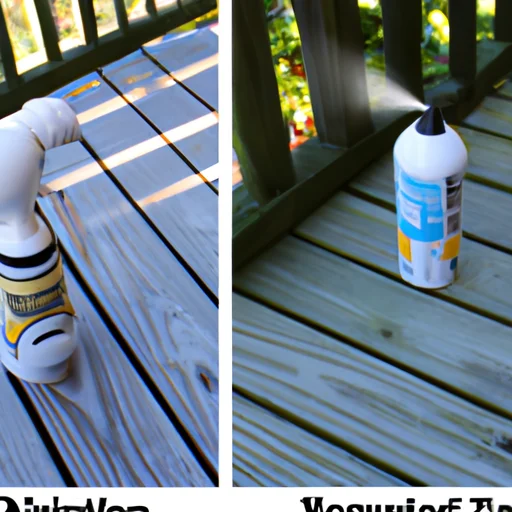You’ve finally decided to tackle that exterior painting project, and you’re wondering if using a sprayer would be a suitable method. Well, the good news is that using a sprayer for exterior painting is not only possible but can also be a time-saving and efficient way to achieve a flawless finish. By utilizing a sprayer, you can effortlessly cover large surface areas, resulting in a more professional-looking paint job.
However, it’s important to consider various factors, such as the type of surface you’re painting, weather conditions, and the proper use of equipment, to ensure successful results. So, let’s explore the world of sprayer painting and discover if it’s the right choice for your exterior project.
Table of Contents
Sprayer for Exterior Painting
Overview
If you’re considering painting the exterior of your home or any other outdoor surface, using a sprayer can be a fantastic option. Sprayers allow for quick, efficient, and uniform coverage, saving you both time and effort. In this article, we will delve into the benefits of using a sprayer for exterior painting, factors to consider before using one, the preparation required, how to choose the right sprayer, suitable types of paints, helpful tips, common mistakes to avoid, cost and time considerations, as well as safety precautions.
Benefits of Using a Sprayer for Exterior Painting
One of the primary advantages of using a sprayer for exterior painting is its speed. Sprayers can cover a large surface area in a fraction of the time compared to using brushes and rollers. Additionally, sprayers provide an even distribution of paint, resulting in a smooth and professional finish. Their versatility allows you to tackle various types and textures of surfaces, including stucco, siding, or even fences. This uniform application also ensures that every nook and cranny is adequately covered, providing better protection against the elements.
Factors to Consider Before Using a Sprayer
While sprayers offer many benefits, it’s essential to consider a few factors before deciding to use one for your exterior painting project. Sprayers tend to create more overspray, which can result in wasted paint if not properly controlled. Additionally, they require more thorough masking and covering of adjacent surfaces to prevent unintended paint coverage. Sprayers are also not ideal for intricate detailing work, as brushes are better suited for those areas. Finally, it’s important to have a steady hand and maintain an appropriate distance during application to ensure an even coat and avoid drips.
Preparation Required for Sprayer Application
Proper preparation is crucial when using a sprayer for exterior painting. Start by thoroughly cleaning the surface to remove any dirt, dust, or mildew. This step ensures a smooth and long-lasting finish. Next, carefully inspect the area for cracks, peeling paint, or other imperfections. Repair or patch any damaged surfaces to create a seamless base for painting. Additionally, cover or remove any items that should not be painted, such as outdoor furniture or plants. Finally, protect nearby surfaces, such as windows, trim, and landscaping, with drop cloths, plastic sheeting, or painter’s tape.
Choosing the Right Sprayer for Exterior Painting
When selecting a sprayer for your exterior painting project, several factors come into play. Consider the size of the area you need to paint as well as the type of paint you plan to use. For smaller areas or touch-ups, a handheld sprayer may be sufficient, while larger surfaces may require a more robust and powerful airless paint sprayer. The sprayer’s pressure and tip size are also essential considerations, as they can impact the quality and speed of paint application. Research different sprayer models and consult with professionals or experienced painters to determine the best fit for your specific needs.
Types of Paints Suitable for Sprayer Application
Most types of paint can be used with a sprayer, but there are a few key considerations. Latex or water-based paints are commonly used due to their ease of application, quick drying time, and easy cleanup. They are also environmentally friendly. Oil-based paints can also be used with a sprayer but typically require additional thinning and may have a more extended drying time. It’s important to check the manufacturer’s instructions for the specific paint you choose to ensure compatibility with sprayer application.
Tips for Using a Sprayer for Exterior Painting
To achieve the best results when using a sprayer for exterior painting, here are some useful tips to keep in mind:
- Start with a test spray on a small, inconspicuous area to ensure the sprayer is adjusted correctly and to become familiar with its application.
- Maintain a consistent distance between the sprayer nozzle and the surface being painted. Typically, this distance should be around 12-18 inches, but consult the specific sprayer’s manual for guidance.
- Keep the sprayer nozzle perpendicular to the surface, moving it in a controlled, overlapping motion. Avoid excessive spraying in one area to prevent drips and runs.
- If using multiple coats, allow each coat to dry adequately before applying the next. This will help achieve a more even and vibrant finish.
- Clean the sprayer thoroughly after each use to prevent clogs and ensure its longevity. Follow the manufacturer’s instructions for cleaning and maintenance.
Common Mistakes to Avoid when Using a Sprayer for Exterior Painting
While sprayers can make exterior painting easier, there are some common mistakes that you should avoid to ensure satisfactory results:
- Neglecting proper surface preparation, such as cleaning, repairing, and masking, can lead to paint adhesion issues and an uneven finish.
- Failing to properly adjust the sprayer’s pressure, nozzle size, or spray pattern can result in overspray, uneven coverage, or wasted paint.
- Painting in adverse weather conditions, such as high winds or excessive heat, can affect the quality of the paint application and potentially damage surrounding areas.
- Not wearing appropriate protective gear, such as goggles, gloves, and a respirator, can pose health risks due to the inhalation of paint particles or fumes.
- Rushing through the painting process can lead to missed spots, drips, and an overall subpar finish. Take your time and ensure thorough coverage.
Costs and Time Considerations
When contemplating using a sprayer for exterior painting, it’s important to consider both cost and time factors. While sprayers can be a more significant investment upfront compared to brushes and rollers, they can save you time and effort in the long run. The speed and efficiency of sprayers generally result in reduced labor costs, especially for larger projects. However, it’s essential to factor in the costs of paint, additional masking materials, and potential repairs to damaged surfaces. It’s also important to note that sprayer application can be quicker than conventional methods, but proper masking and preparation may require additional time.
Safety Precautions for Sprayer Application
As with any painting project, safety should be a top priority when using a sprayer for exterior painting. Here are some essential safety precautions to follow:
- Wear appropriate personal protective equipment, including safety glasses or goggles, a respirator mask, and gloves, to protect yourself from potential paint particles or fumes.
- Ensure proper ventilation when using oil-based paints or other products with strong odors. Open windows and doors and use fans if necessary.
- Work in a well-lit area to ensure proper visibility while operating the sprayer.
- Keep children, pets, and bystanders at a safe distance during the painting process to avoid accidents or exposure to paint.
- Follow the manufacturer’s instructions for the specific sprayer, including maintenance, handling, and storage guidelines, to prevent accidents and ensure its longevity.
In conclusion, using a sprayer for exterior painting offers numerous benefits, including speed, efficiency, and a professional finish. However, it’s important to consider various factors before deciding on this method, including the amount of overspray, the need for thorough preparation, and the suitability of different sprayer models and paint types. By following proper safety precautions, avoiding common mistakes, and investing time in adequate surface preparation, you can achieve outstanding results while enjoying the convenience that sprayer application provides.

Upgrade Your Painting Game
Explore our Introduction To The Best Paint Sprayers guide to take your projects to the next level!

